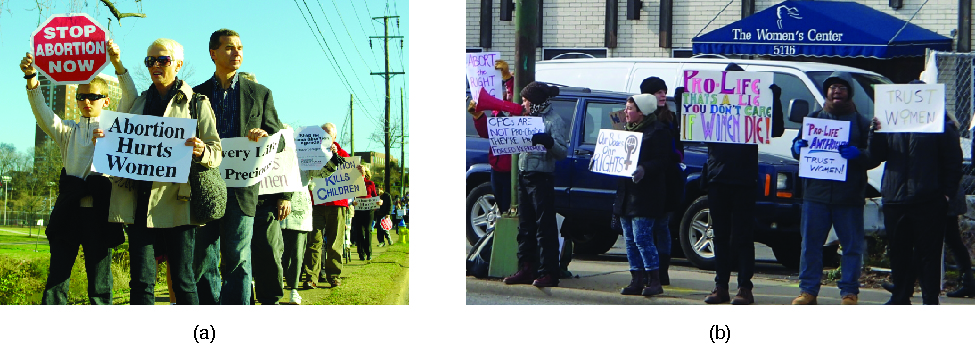| << Chapter < Page | Chapter >> Page > |
Starting in the 1980s, Supreme Court justices appointed by Republican presidents began to roll back the
Roe decision. A key turning point was the court’s ruling in
Planned Parenthood v. Casey in 1992, in which a plurality of the court rejected
Roe’s framework based on trimesters of pregnancy and replaced it with the
undue burden test , which allows restrictions prior to viability that are not “substantial obstacle[s]” (undue burdens) to women seeking an abortion.

Beyond the issues of contraception and abortion, the right to privacy has been interpreted to encompass a more general right for adults to have noncommercial, consensual sexual relationships in private. However, this legal development is relatively new; as recently as 1986, the Supreme Court ruled that states could still criminalize sex acts between two people of the same sex.
The state and national governments still have leeway to regulate sexual morality to some degree; “anything goes” is not the law of the land, even for actions that are consensual. The Supreme Court has declined to strike down laws in a few states that outlaw the sale of vibrators and other sex toys. Prostitution remains illegal in every state except in certain rural counties in Nevada; both polygamy (marriage to more than one other person) and bestiality (sex with animals) are illegal everywhere. And, as we saw earlier, the states may regulate obscene materials and, in certain situations, material that may be harmful to minors or otherwise indecent; to this end, states and localities have sought to ban or regulate the production, distribution, and sale of pornography.

Notification Switch
Would you like to follow the 'American government' conversation and receive update notifications?